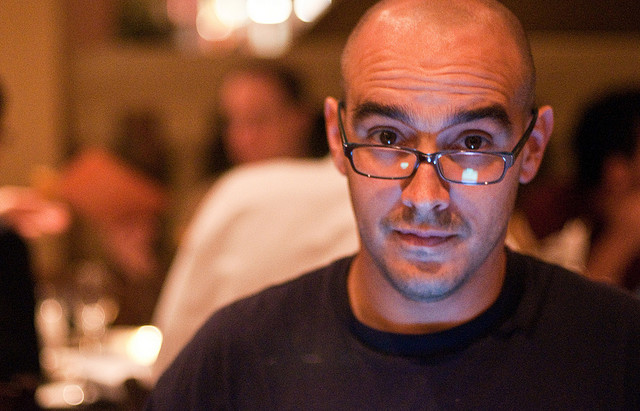Ex Director of Marketing at PayPal and founder of SimplyHired and startup accelerator 500 Startups, Dave McClure, knows a thing or two about startup marketing. We caught up with him to see what we could learn…
In the past, Dave has spoken of how startups shouldn’t bother with viral referral mechanisms until their products don’t suck anymore. Dave laughs when I mention this. “I think that was when a lot of people were doing marketing through Facebook apps and there was relatively lightweight usage and retention and people were kind of just churning through a shit tonne of users.”
Nowadays, Dave says startups can certainly start to think about product marketing loops that are inherently viral, “but it may also depend a lot of what the cost of the product is, how big the audience is, what the margins are and how easy it is to refer other people.”
“For things that are low cost, low margin, relatively easily referred, viral might fit a lot better” Dave says. However, for higher cost products with higher margins that are less easily referred, thinking ‘viral’ is likely the wrong idea.
“Selling a car is not always the easiest thing to make go viral, but you might have a lot of margin built into the car business where you could acquire those users through paid techniques or at least supplement organic techniques with paid acquisition and awareness.”
Choosing acquisition channels that suit your costs and margins
Dave says that when considering which customer acquisition channels to use, startups need to think about “the cost of the product relative to the purchaser’s budget” and “how much margin you have in there to be able to use in the sales and marketing process.”
“At PayPal we had a situation where users were only worth maybe $5-10 a year to us on the payment side” says Dave, “and the cost of acquisition was sometimes pretty high. It might cost you a year’s worth of customer value to acquire a customer, so if we were able to do it through viral means then that was basically free.”
However this isn’t a method that would work for other, similar companies, Dave says. “There were different types of financial businesses where the cost of customer acquisition might be a lot more valuable. There might be a bigger margin in terms of cost of customer acquisition versus lifetime value, where you could spend some of that margin in customer acquisition through paid methods. But I don’t think people really think through that process very much.
“Everybody just assumes that viral is the only good way to acquire users. Some products lend themselves to that a lot easier than others.” Conversely, Dave says, “some people just think that paid acquisition is the only way to go and actually there’s a lot of organic marketing work that you can do on copy and visual image and other things that will lower your cost.”
Often companies make the mistake of starting on the marketing process too late says Dave. Rather, startups should be thinking about the cost of building product, the value of a customer, whether or not there’s a margin to play with right from the beginning, and then thinking about marketing campaigns that come out of that.
“Again, some of them may be organic” he says, “some may be viral, some may be paid, some might be a mix of all of those. Most founders tend to come from the tech side, or at least that we encounter, and they think about building shit and they think about product. They don’t think that thoughtfully about the customer side and the marketing, at least until the growth hacking craze kicked in maybe 3-4 years ago. Then maybe they thought about it a little too much as hacking and not so much based on just ‘hey, are you describing your product in an interesting way that appeals to the psychology of a certain type of customer?’”
Leaky buckets in marketing and product
“I think both with building viral products and with doing growth hacking, if you have a leaky bucket, trying to pour a lot of water into that bucket isn’t necessarily a great strategy” says Dave.
“Sometimes, plugging the holes and fixing the bucket is a better strategy before you start trying to pour a lot of water into it.”
It’s important for startups to remember, says Dave that these holes can be plugged through marketing efforts as well as product efforts…
“They may be plugged through doing retention efforts as much as building features. Sometimes it’s building features but I think for a lot of people building features is the hammer that they want to apply to every nail. When I was at PayPal we got an email subject line changed and a little bit of body text changed, and that had a 20% lift on customer conversion for one part of the process. That had a pretty big impact on overall economics for the business but it was a very, very simple change.
“Sometimes” concludes Dave, “you just need to think more thoughtfully about different parts of the business model and process.”
If you want to discuss your product or startup, get in touch today.
Image via Forbes
If you’d like to discuss your startup or project, get in touch with Simpleweb today.




